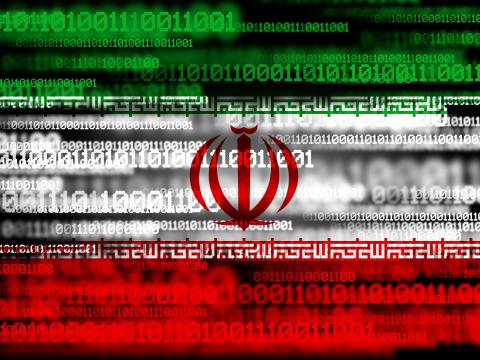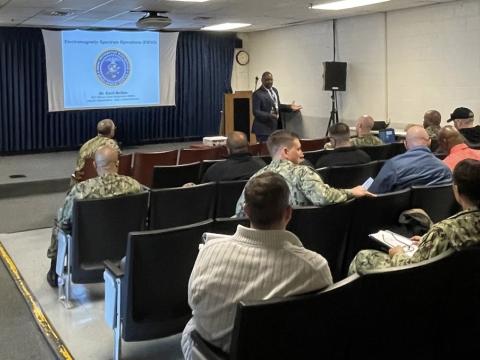Asia-Pacific Nations Face Security Challenges
The vast Asia-Pacific region, rife with emerging democracies and revitalized economies, must turn its attention to establishing a viable security framework. Greater economic interdependence and the benefits of the information revolution present that region with both opportunities for growth and threats of destabilizing unrest.
Recently, much of the world’s attention was focused on conflicts in Europe—Bosnia and Herzegovina and Kosovo. The unrest in these two regions was defined by government leaders as posing a significant security threat to the industrialized West. The United States and its North Atlantic Treaty Organization (NATO) allies mobilized to stop the ethnic cleansing underway and bring order to the afflicted regions.
In September, the same type of crisis emerged in the Pacific region with the violence in East Timor. A pro-independence referendum vote triggered widespread killings that aroused the world’s conscience and led to the formation of an international peacekeeping force for that troubled territory.
These events bring to light a new trend in the industrialized West: that it is no longer merely the West. Democratic capitalism has taken hold in Asia, and the Free World’s security is intertwined among Europe, North America, Asia and Australia. This socio-economic structure may have been born in Europe and North America, but it is now the common thread that runs throughout the Earth’s hemispheres.
This is not merely because the Asia-Pacific region is a growing marketplace. The area also is a font of innovation for many of the major technologies that are defining the planet’s future. Japan and Taiwan are key players in the information revolution, but many other nations are joining the fray as their own well-educated human resources position them to garner the benefits of the information age.
For example, Singapore has a thriving, well-established free-market economy, and its importance to the region is growing. South Korea and Thailand are recovering from the economic collapse that paralyzed most Asian markets. Malaysia has committed to the development of an Asian “Silicon Valley” designed to place that country’s economy at the forefront of the information revolution.
Ten years after the fall of the Berlin Wall, a framework defining regional security is emerging in Europe. However, this is not yet the case in the Pacific region. Part of the problem is that the area never organized itself into two distinct blocs, as did Europe during the Cold War. The end of the Cold War left a clear victor in Europe—the NATO nations—and former adversaries and neutral nations adjusted their security policies accordingly. The process is nowhere near completion, but Europe now can see the general path toward a continentwide security environment.
On the other hand, the Asia-Pacific region is considerably fragmented politically, economically and socially. In some ways, this situation is reminiscent of Europe before World War I. A raft of nations maintain different levels of relations amid intertwining security agreements. Distrust varies among many countries because of longtime perceptions and historical wrongs to an extent. Many of these cultural differences owe their origins in part to geography—the area’s vastness and maritime nature make travel, let alone natural migration, more difficult than in contiguous territory.
Consequently, one of the things that was lacking when East Timor erupted was a well-established security organization. The original Southeast Asia Treaty Organization (SEATO)—which included the United States, former colonial powers Great Britain and France, and regional members Australia, New Zealand, Pakistan, The Philippines and Thailand—was envisioned to be a NATO of Southeast Asia. With support for it ebbing over time, SEATO formally ended in 1977.
Had this security alliance been successful and still in existence, it might have been able to move rapidly to mobilize an organized response for East Timor along preplanned lines. Instead, an ad hoc group was formed to introduce forces into the region as quickly as possible, but it was not soon enough to stop some of the worst bloodshed.
The United States is viewed as the honest broker for security in the entire region by most nations in the area. It has no claims on any nation’s territory in that region; past conflicts with other countries are fading into history; and its economy is the primary growth engine for that large marketplace. These points add up to the United States being best positioned to anchor a NATO-type security vehicle in the Asia-Pacific region.
This Pacific security organism would have an advantage over its Atlantic counterpart in that no nation would have lingering memories of a military confrontation with the alliance, as is currently the case with Russia and NATO. Participation alone would spur greater cooperation and communication among the various Asia-Pacific nations. And, it would stand ready to assist victims of natural disasters, which regularly plague the area.
The seeds of trans-Pacific defense cooperation already are sown. The United States and Australia long have had a mutual defense agreement. Japan is strengthening its defense ties with the United States to take a more active role in regional security. Some area countries, under the auspices of the United Nations Command, are committed to the defense of South Korea, which has its own formidable military. Many nations are equipping their armed forces with U.S. hardware, which improves interoperability in coalition operations.
The United States is not a European nation; yet it joined forces with Europe because both regions shared similar political-economic systems and values. Together they had much to lose if hostile forces deprived them of their freedoms. Now, many Asia-Pacific nations share these same values as they look toward the West for their future.
The United States is as much a Pacific nation as it is an Atlantic one. Joining with its Asia-Pacific counterparts in a full regional security organization would help provide the same assurances now enjoyed by Europe. This, in turn, will help ensure cooperative economic growth that will benefit all nations in the region and beyond.




Comments